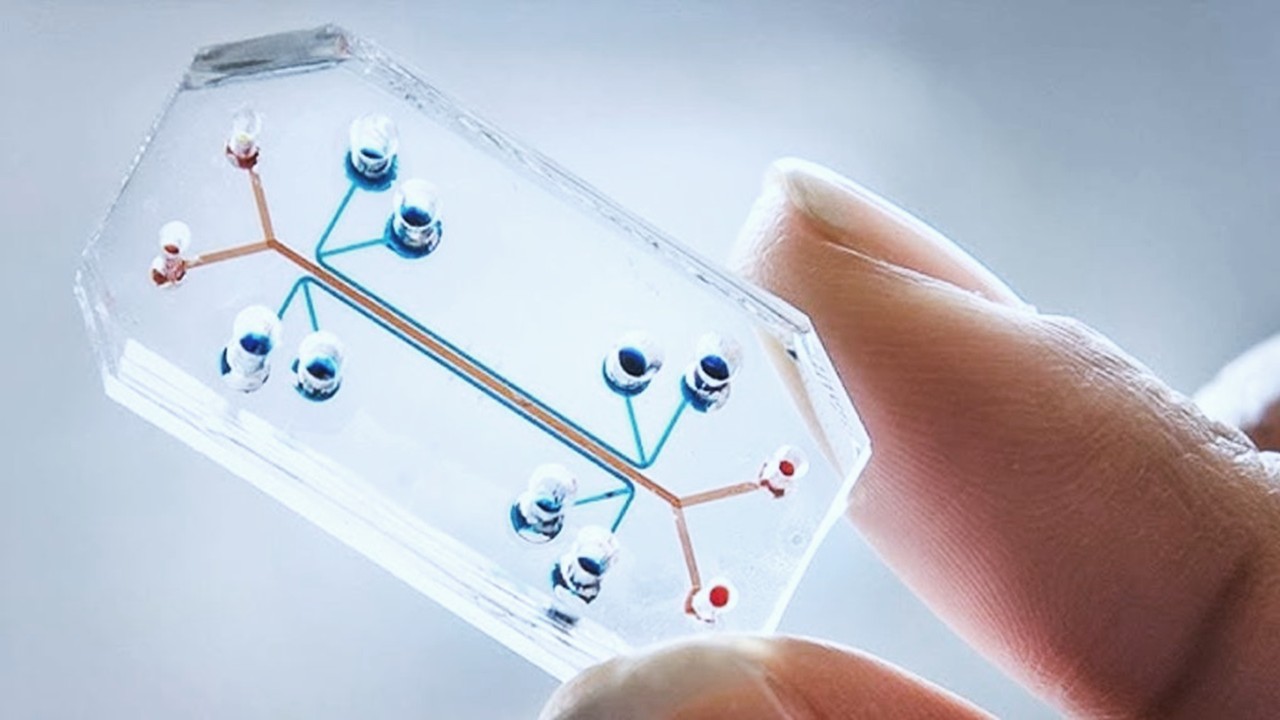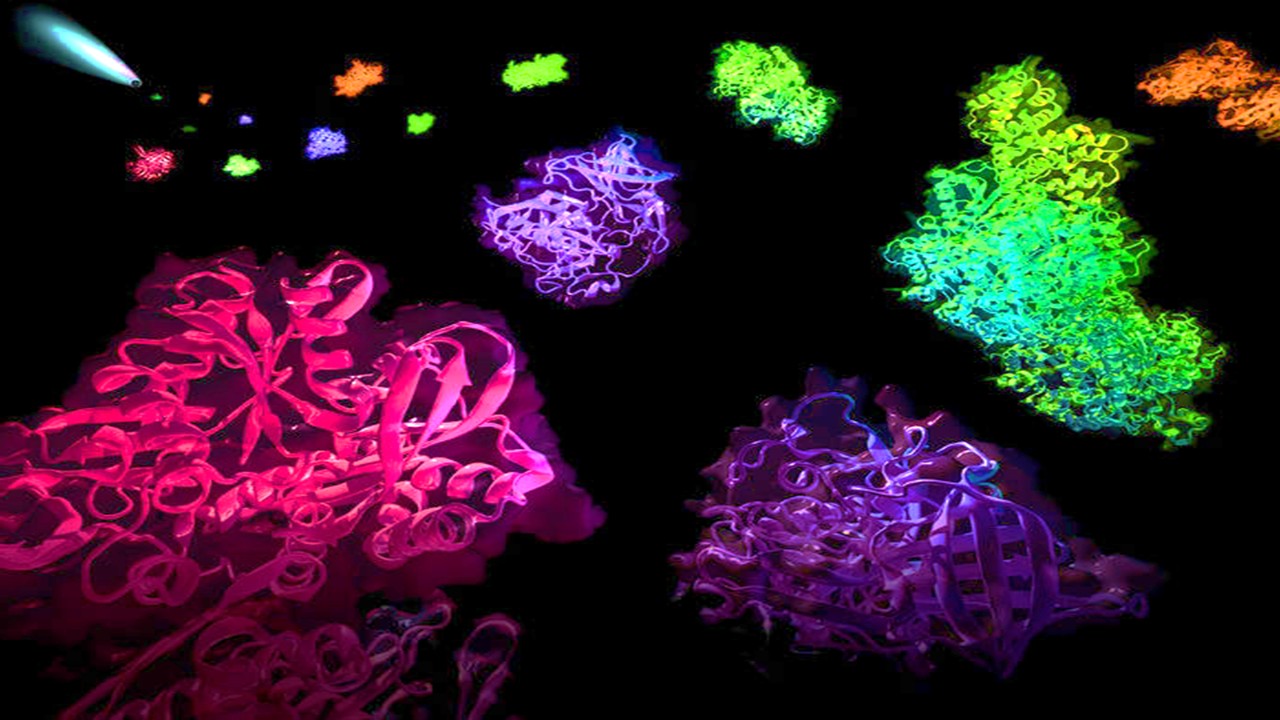Rethinking API Performance Through Coprocessing Innovation
The pharmaceutical industry continues to encounter challenges in formulating high-dosage oral solid dosage forms, particularly when APIs such as metformin hydrochloride exhibit poor compressibility, limited flowability, and suboptimal solid-state mechanics that impair manufacturability. These limitations are not merely technical inconveniences but represent fundamental constraints in high-volume production environments that increasingly rely on continuous manufacturing and direct compression strategies. Coprocessing, as a particle engineering approach, offers a viable solution by synergistically integrating APIs with excipients to yield composite particles possessing improved bulk, mechanical, and biopharmaceutical properties without altering the fundamental pharmacodynamics of the active molecule. The use of hydroxypropyl cellulose (HPC-L), a low-viscosity, non-ionic polymer known for its hydrophilic nature and stability-enhancing characteristics, introduces a platform for enabling direct compression of poorly compactable APIs through a targeted coprecipitation strategy. This methodology, applied post-crystallization, focuses on the physicochemical interplay between polymer precipitation and controlled agglomeration, thus generating stable, spherical microparticles with superior flow characteristics and compressibility metrics.
Coprocessing with HPC-L via coprecipitation strategically bypasses traditional granulation methods by enabling engineered surface modification through solvent–antisolvent interaction, effectively tailoring interparticle cohesion and particle morphology. Unlike physical mixing or melt extrusion, coprecipitation leads to an intimate association between the drug and polymer phases at the molecular interface, resulting in homogenous dispersion without compromising the API’s polymorphic identity or chemical integrity. The process is meticulously designed to influence critical material attributes (CMAs), including particle size distribution (PSD), surface energy, flow function coefficient (FFC), and bulk density (BD), all of which dictate the powder’s downstream behavior during compression. Metformin hydrochloride, a benchmark for difficult-to-formulate APIs due to its irregular crystal habit and cohesive nature, serves as an ideal model compound to validate this technique, providing insights into material transformations and process design space.
In a post-crystallization coprecipitation framework, the focus shifts toward controlled nucleation and growth of polymer-rich agglomerates through the precipitation of HPC-L from a binary organic solvent mixture into a heptane-based antisolvent system. The use of acetone and acetonitrile provides a miscible medium to dissolve HPC-L, ensuring adequate polymer chain mobility and precipitation control when introduced into the non-polar antisolvent. This solvent–antisolvent pairing fosters rapid phase separation of HPC-L while simultaneously facilitating its deposition on suspended metformin crystals, initiating the formation of spherical agglomerates with favorable micromeritic properties. Through this mechanism, the intrinsic weaknesses of metformin HCl—namely poor flow, inconsistent dosing, and limited compressibility—are mitigated by engineering a stable polymer shell that modifies interparticle interactions and optimizes bulk handling properties.
From an industrial scalability perspective, the transition from batch granulation to coprecipitation-mediated coprocessing is not only technically desirable but economically viable, reducing equipment dependency and processing steps. The simplification of the manufacturing workflow has a profound impact on throughput, cost-efficiency, and quality consistency, especially in high-dose drug products where excipient minimization is critical. Coprecipitation with HPC-L enables the design of directly compressible formulations that maintain uniformity, eliminate the need for binders or disintegrants, and streamline validation cycles, making this a cornerstone for future-proofing solid dosage form manufacturing. The study discussed here outlines a robust and scalable process capable of transforming a brittle, uncompressible drug into a formulation-ready powder via a reproducible, reproducibly validated coprecipitation system.
Engineering the Coprecipitation System for Polymer–API Synergy
The coprecipitation of metformin hydrochloride with hydroxypropyl cellulose begins with the design of a solution-antisolvent system that enables polymer precipitation under highly controlled thermodynamic and kinetic conditions. Acetone and acetonitrile, acting as co-solvents in an 85:15 volume ratio, were selected for their mutual solubility with HPC-L and low solubility for the active drug, facilitating polymer dissolution while maintaining drug suspension throughout the process. Upon formation of a polymeric solution, metformin crystals are suspended and aged in the media at 20 °C for optimal stabilization prior to antisolvent dosing, with heptane incrementally introduced over a three-hour window to induce uniform precipitation. The progression of HPC-L precipitation onto the suspended API particles is monitored using BlazePAT 900 in-line imaging to evaluate particle size evolution and chord length distribution in real-time.
A series of decantation steps are executed to remove residual organic solvents prior to filtration and drying, effectively minimizing acetone and acetonitrile residues while preserving particle morphology. The agglomerates are then subjected to vacuum drying at 40 °C, ensuring the final product remains anhydrous and free of residual solvents exceeding ICH guidelines. Key to the success of the coprecipitation process is the precise control of precipitation kinetics and particle formation dynamics, both of which are influenced by solvent polarity, mixing intensity, and the rate of heptane addition. These parameters directly impact the integrity of the formed agglomerates, dictating their bulk density, cohesiveness, and susceptibility to downstream attrition under compressive stress.
To refine particle size distribution and ensure size uniformity, wet milling via rotor stator homogenization is applied at defined heptane dosing milestones (10%, 20%, 25%, 35%, and 50%), pausing antisolvent addition to impart shear stress to the growing agglomerates. This high-shear wet-milling facilitates fragmentative rearrangement of loosely bound clusters and encourages densification of partially formed particles, resulting in spherical agglomerates with smooth surfaces and narrow PSD spans. Agglomerate sedimentation dynamics are exploited between decantations by halting agitation to allow gravity-driven separation, followed by supernatant removal and heptane replenishment. This stage-wise solvent exchange further refines particle quality and ensures that residual solvent content in the final product remains within acceptable regulatory limits.
Reproducibility studies at increased batch scale (30 g API vs. 4 g in screening) confirm that the optimized parameters for polymer-to-drug ratio (80:20 wt/wt), solvent ratios, and homogenization settings yield comparable physicochemical results across scale. The reproducibility assessment involved triplicate batches prepared under identical process parameters, demonstrating consistent particle morphology, uniformity indices, and compression readiness without the need for formulation-specific excipients. This confirms the process robustness and feasibility of integration into pilot and commercial manufacturing settings, validating the scalability and industrial relevance of this coprecipitation system.
The reproducibility of the optimized coprecipitation protocol underscores the importance of polymer selection, solvent polarity management, and mechanical agitation synchronization for achieving particle-level control. The use of HPC-L as the coprecipitating polymer presents advantages over previously used polyvinylpyrrolidone-based systems by providing a hydrophilic, low-viscosity matrix with minimal impact on drug release kinetics. The spherical agglomerates generated through this process are directly compressible, stable, and exhibit improved performance across rheological, thermal, and mechanical characterization platforms, positioning them as viable candidates for large-scale pharmaceutical tablet production.
Morphological Reinvention: From Crystalline Irregularities to Engineered Agglomerates
Transforming the particulate morphology of metformin hydrochloride from a jagged, irregular, and cohesive crystalline powder into spherical, free-flowing agglomerates marks a pivotal milestone in pharmaceutical process innovation. The scanning electron microscopy (SEM) and polarized light microscopy (PLM) images obtained throughout the coprecipitation lifecycle provide compelling visual evidence of morphological evolution, documenting the transition from fine particulate dust to robust spherical entities with a refined surface topology. This transformation is not merely cosmetic; the engineered morphology directly influences packing behavior, die fill reproducibility, and surface contact during compaction, all of which determine the final dosage form’s mechanical integrity. The structural metamorphosis is governed by polymer precipitation kinetics and wet media milling, where agglomerates grow via surface deposition and densification mechanisms that optimize the flow and compressibility properties of the API-polymer complex. This precise orchestration of process variables results in particles that are not only visually uniform but functionally superior, establishing a foundational advancement in direct compression technology.
Dynamic image analysis further corroborates the morphology findings, with wet dispersion techniques revealing a unimodal particle size distribution across all milled and unmilled M-CPT batches. The neat metformin HCl powder displayed a broad PSD with a high span, indicative of agglomerative instability and unpredictable flow. In contrast, M-CPT particles demonstrated sharply defined D50 values and reduced span metrics, signaling a high degree of size uniformity and process control. Notably, wet-milled M-CPT agglomerates exhibited a narrower PSD and smaller median particle size than their unmilled counterparts, affirming the utility of shear-assisted wet milling in regulating particle geometry. This control over particle formation is critical in maintaining homogeneity in powder blends, mitigating content uniformity failures during formulation, and ensuring reproducible die cavity fill during compression. The interplay between particle engineering and morphological refinement thus becomes a linchpin in achieving pharmaceutical-grade flowability and tabletability.
Raman imaging, employing spatial confocal mapping with laser excitation, offered an additional layer of structural verification by mapping the distribution of MET and HPC-L across the surface and core of the agglomerates. Spectral signals specific to metformin HCl and HPC-L were identified and quantitatively resolved, revealing a uniform interspersion of the drug and polymer throughout the microparticle matrix. The homogeneity of polymer embedding is critical not only for maintaining batch-to-batch consistency but also for ensuring uniform dissolution behavior, since agglomerates that are inhomogeneously coated may result in erratic drug release or mechanical performance failures. This analytical approach confirmed that HPC-L was uniformly deposited onto and integrated within the crystalline API matrix, demonstrating successful coprecipitation at a structural and molecular level. Furthermore, no novel chemical interactions were observed between metformin and HPC-L, preserving the API’s pharmacological identity while enhancing its formulation compatibility.
This morphological and surface-level reengineering effort, accomplished through the CPT methodology, yields agglomerates that defy the baseline limitations of metformin HCl and redefine its pharmaceutical usability. The resultant M-CPT material displays improved physical packing behavior, reduced interparticle adhesion, and a distinct increase in bulk density—all of which can be directly correlated to particle shape and surface topology. Through this lens, morphology ceases to be a static attribute and becomes an engineering parameter, one that can be precisely manipulated to drive performance improvements across the pharmaceutical value chain. The reproducibility of these findings across scale-up batches reinforces the argument that particle morphology, once an overlooked detail in drug design, must now be treated as a primary design space in direct compression strategies.
The broader implications of morphological control extend into regulatory and quality domains, as consistent particle shape and size distribution facilitate smoother process validation, fewer deviations in compression profiles, and improved predictability of product behavior during stability testing. As the industry continues to push toward continuous manufacturing and real-time release testing, the ability to reliably engineer and replicate specific particle morphologies becomes an essential capability. The coprecipitation strategy, supported by robust imaging and spectroscopy, not only meets these modern expectations but also redefines what is achievable for even the most formulation-challenged APIs. Through controlled morphology, we not only enable processability—we resurrect the utility of problematic compounds like metformin hydrochloride.
Powder Flow Rheology and Mechanical Performance: Dissecting the Physics of Powder Behavior
Pharmaceutical powders must conform to strict rheological expectations to ensure uniform dosing, efficient die filling, and seamless tablet ejection, and in this domain, the flow function coefficient (FFC) serves as a pivotal quantitative descriptor. Using FT4 powder rheometry, unprocessed metformin hydrochloride exhibited high cohesion and low flow factor, characterizing it as a highly cohesive and poorly flowing material incompatible with direct compression. In contrast, M-CPT agglomerates displayed dramatically enhanced FFC values, reflecting a transformation into a “free-flowing” powder class. This advancement in powder behavior is attributed directly to spherical morphology, increased bulk density, and reduced interparticle friction facilitated by the coprecipitated polymer shell. The rheological improvement is not circumstantial; it is an engineered outcome of particle–particle interaction modulation, demonstrating how molecularly thin polymer coatings can decisively alter macroscale material handling.
The granule integrity test (GIT), employed as a proxy for downstream mechanical robustness, provided further confirmation of the structural stability of the agglomerates under process-relevant acoustic stress. By subjecting the M-CPT agglomerates to 73G resonant acoustic energy and assessing post-sieving particle retention above the 250 µm threshold, the GIT index was calculated and found to be well below critical fragility limits. This low GIT value affirms that the coprocessed granules possess sufficient resistance to attrition, abrasion, and segregation, all of which are failure points in traditional direct compression formulations. Robust granules translate into predictable blend behavior and reliable compression performance, minimizing the risk of stratification and dose non-uniformity in final tablets. These findings position M-CPT as not only a rheologically compliant material but one that meets the mechanical criteria for high-throughput rotary compression lines.
Compression studies, carried out using a Styl’One Nano simulator with flat-faced 11.28 mm punches, demonstrated the superior tableting properties of M-CPT versus neat metformin. The agglomerates were subjected to a range of compaction pressures without incorporating any dwell time, and the resulting tablets were stored under ambient conditions to assess elastic recovery and compact stability. Measured parameters included breaking force, tablet tensile strength, and porosity, all of which indicated superior performance metrics for M-CPT. Tablets formed from M-CPT showed higher mechanical strength and reduced friability, owing to the increased bonding area made possible by the particle fragmentation and plastic flow during compression. These outcomes are particularly significant given that neat metformin hydrochloride is essentially uncompressible under similar conditions, underscoring the transformative impact of coprecipitation on tabletability.
“In-Die” Heckel analysis further dissected the compaction mechanics by evaluating the plastic deformation behavior of M-CPT agglomerates under a saw-tooth compression profile. The yield pressure of the agglomerates was found to be significantly lower than that of neat MET, suggesting a material with high plasticity and low resistance to deformation—a crucial attribute for robust tableting under high-speed production conditions. The ability to deform plastically under pressure allows the agglomerates to densify efficiently, eliminate void spaces, and form strong interparticulate bonds, thereby improving tensile strength and reducing the risk of capping or lamination. The Heckel profile validated the assumption that coprecipitated materials could outperform traditional dry blends or granulated systems in terms of compressibility, compactability, and manufacturability, all while using a single, multifunctional excipient.
Moreover, when M-CPT was subjected to simulated rotary compression conditions replicating a Korsch XL400 at 98,700 tablets per hour, the system demonstrated exceptional tablet uniformity and low deviation in physical parameters. The agglomerates sustained rapid compression cycles without fragmentation or ejection failures, maintaining consistent mass, thickness, and hardness across batches. This operational success at simulated industrial speeds confirms the scalability of the formulation and its readiness for high-volume manufacturing, setting a new benchmark for coprecipitated pharmaceutical powders. The capacity to compress directly with minimal excipients, under aggressive industrial timelines, illustrates the practical value of this research beyond the confines of laboratory exploration.
Thermal, Structural, and Residual Solvent Analyses: Unraveling the Material Stability Profile
Comprehensive solid-state characterization was pivotal in confirming that coprecipitation did not alter the crystalline integrity or introduce unwanted phase transitions in metformin hydrochloride. Powder X-ray diffraction (PXRD) patterns of M-CPT from both milled and unmilled batches were meticulously analyzed, revealing peak positions and intensities consistent with those of neat MET. The absence of novel diffraction peaks or amorphous halos strongly suggested that no polymorphic transformation or amorphization occurred throughout the coprecipitation and drying stages. This retention of the crystalline structure is critical for preserving the API’s established bioavailability and ensuring regulatory compliance, as polymorphic variation could adversely impact dissolution profiles, shelf-life, and therapeutic performance. Furthermore, the reproducibility of PXRD patterns across screening, scale-up, and reproducibility batches demonstrated the robustness of the CPT protocol in maintaining phase purity and material consistency.
Differential scanning calorimetry (DSC) and thermogravimetric analysis (TGA) were conducted in tandem to explore thermal transitions and quantify any weight losses attributable to moisture or solvent residues. The melting endotherm of M-CPT was observed to be marginally depressed compared to neat MET, with a slight reduction in melting point and enthalpy of fusion. These changes are best interpreted as physical consequences of the polymer-drug interface and are not indicative of chemical degradation or polymorphic transformation. The fusion enthalpy shift likely stems from surface-level polymer interaction, which marginally disrupts the crystal lattice energy at the particle boundaries without affecting the bulk crystalline domain. TGA analysis further confirmed that the coprocessed material was anhydrous, exhibiting no significant mass loss below 100 °C and no evidence of entrapped solvent decomposing during heating cycles.
Residual solvent analysis using headspace gas chromatography conclusively demonstrated the absence of acetone and acetonitrile, with heptane residues maintained well below the ICH Class III solvent thresholds. The use of multiple decantation cycles, combined with vacuum drying, proved effective in removing organic solvents, ensuring that the final M-CPT product is pharmaceutically safe and compliant with global quality standards. This is of paramount importance as residual solvents not only pose toxicity risks but may also alter API stability, dissolution, and mechanical properties over time. The elimination of such residues without impacting agglomerate structure affirms the compatibility of the CPT process with stringent GMP protocols and further strengthens its case for industrial adoption. Moreover, the ability to achieve these results without thermal degradation or solvent crystallization events affirms the precise thermodynamic balance embedded in the process design.
Karl Fischer titration further corroborated TGA findings by measuring the water content in the CPT product. The results demonstrated low water activity, indicating that the polymer layer did not entrap moisture or promote hygroscopic behavior during processing. This dry state stability is advantageous for hygroscopic APIs like metformin hydrochloride, which typically exhibit formulation challenges related to moisture-induced degradation. Maintaining low water content prevents hydrolysis, caking, and recrystallization, especially when stored under variable environmental conditions. The final product’s compliance with moisture limits not only assures physical stability but also supports long-term packaging and storage without requiring specialized atmospheric controls. The optimized balance of hydrophilicity and barrier function provided by HPC-L contributes to this enhanced stability profile.
Collectively, these analytical assessments—PXRD, DSC, TGA, headspace GC, and Karl Fischer—paint a cohesive picture of a coprecipitated API-excipient system that is structurally stable, thermally robust, and chemically inert. The data dispel concerns about residual solvent toxicity, thermal sensitivity, or physical instability and confirm that coprecipitation with HPC-L can yield a high-performance formulation platform for poorly compressible APIs. This comprehensive solid-state validation elevates the CPT approach from a promising experimental technique to a dependable industrial tool for API transformation, capable of meeting stringent regulatory and performance benchmarks simultaneously.
Dissolution Behavior and Drug Uniformity: Preserving Biopharmaceutical Integrity
Ensuring that coprecipitation does not adversely affect the release kinetics of metformin hydrochloride is central to the success of this particle engineering approach. High-performance liquid chromatography (HPLC) was employed to quantify drug content and assess loading efficiency across multiple M-CPT batches. Results indicated consistent drug content well above the regulatory minimums, with over 78% of the agglomerate mass consisting of active pharmaceutical ingredient. This level of loading is especially notable given the inherent challenge of integrating polymers without diluting API strength or requiring excess excipient mass. Importantly, the uniformity of drug distribution across and within agglomerates was confirmed by Raman imaging, with homogeneous polymer-drug layering observed across various x–y mapping planes. This uniformity mitigates the risk of dose dumping, subpotent units, or batch rejection due to failing content uniformity standards.
Dissolution testing using USP Apparatus I under simulated gastrointestinal conditions (phosphate buffer, pH 6.8 at 37 °C) revealed that M-CPT-based tablets delivered immediate-release profiles indistinguishable from reference standard formulations. Over 98% of the drug content was released within the first hour, with most of the release occurring within the initial half of the testing window. This rapid dissolution behavior, unaffected by the polymeric presence, highlights the non-retardant, non-interacting nature of HPC-L when used at low viscosity and in appropriate loading. The agglomerated architecture did not act as a diffusion barrier or entrap drug within inaccessible polymer matrices, a critical concern when dealing with coprecipitated systems. Instead, the dissolution kinetics mirrored those of standard MET tablets, affirming the functional equivalence of the CPT formulation to marketed products.
The preservation of immediate-release characteristics suggests that the polymer layer deposited during coprecipitation did not impede wetting, disintegration, or solubilization in the gastrointestinal tract. The hydrophilic, non-crosslinked nature of HPC-L allows for rapid hydration and dispersion upon exposure to aqueous media, facilitating the swift liberation of the API into solution. This is a crucial distinction from sustained-release polymers, which often slow drug liberation through matrix swelling, gelation, or erosion mechanisms. In this case, the selection of HPC-L in a non-viscous grade ensured that the improved mechanical and flow properties did not come at the expense of bioavailability or onset of action. Therefore, CPT achieves a delicate balance between formulation robustness and therapeutic immediacy, a feat rarely accomplished through physical blending alone.
The fact that M-CPT agglomerates performed identically under both manual compression and high-speed rotary simulation further supports the conclusion that drug release is resilient to process scale and compression dynamics. This insensitivity to compression pressure, punch speed, and compaction cycle time indicates that the polymer shell neither undergoes densification-induced permeability shifts nor develops compression-induced fusion zones that could delay drug liberation. Consequently, the material behaves predictably across diverse manufacturing scenarios, reducing the risk of scale-up failures and post-market variability. This stability in release behavior is instrumental for generic formulation equivalency, lifecycle management, and regulatory submissions requiring strict bioequivalence to branded counterparts.
The dissolution performance also suggests that CPT processing can enable high-drug-loading tablets without requiring disintegrants, superdisintegrants, or solubilizing agents. This allows the formulation to remain clean-label, minimize excipient interactions, and reduce formulation complexity, particularly beneficial for pediatric, geriatric, or polypharmacy patients. By combining high mechanical integrity with immediate dissolution profiles, the CPT methodology delivers a unique value proposition in the realm of high-dose, poorly compressible drugs. It offers a pathway toward developing cost-effective, high-throughput, and bioequivalent formulations that do not compromise safety, efficacy, or patient adherence.
Toward a New Paradigm: Industrial Relevance and Formulation Futures
The practical implications of this study extend far beyond the laboratory bench, charting a path forward for scalable, reproducible, and regulation-friendly coprocessing strategies. The use of coprecipitation with hydroxypropyl cellulose represents a paradigm shift in how pharmaceutical scientists approach formulation design for structurally challenging APIs. Traditionally, the solution to poor compressibility has been to introduce excipients that increase tablet mass, require wet or dry granulation, or compromise drug release kinetics—all of which reduce the commercial and therapeutic appeal of the final product. In contrast, the CPT strategy achieves a trifecta of goals: it improves processability, preserves pharmacokinetics, and simplifies formulation architecture without introducing new regulatory hurdles.
In manufacturing contexts where equipment cost, process footprint, and energy consumption are under scrutiny, reducing the need for granulation lines, drying tunnels, and multiple milling stages offers significant operational advantages. The ability to perform coprecipitation in a solvent-antisolvent system using jacketed vessels and in-line monitoring technologies makes it highly compatible with existing pharmaceutical infrastructure. Moreover, the reproducibility of particle size, drug content, and compression profiles across multiple scales confirms its industrial robustness. With modifications, the CPT approach can be adapted to continuous manufacturing paradigms, with solvent dosing, agitation, and filtration seamlessly integrated into real-time process analytical technology (PAT) environments.
Looking ahead, the principles of CPT can be extended to other APIs with similar physicomechanical limitations, potentially transforming entire therapeutic categories that have been historically underutilized due to formulation difficulties. APIs with high dose requirements, poor solubility, or brittle crystal structures can be revisited under this new lens, allowing developers to overcome old constraints using modern particle engineering. The incorporation of functional excipients like HPC-L not only adds mechanical value but may also contribute to the stability and shelf-life extension of otherwise sensitive compounds, opening new avenues in orphan drug formulation and fixed-dose combinations.
Furthermore, the minimalist nature of this formulation lends itself to emerging trends in precision medicine, where APIs must be rapidly prototyped, compressed, and personalized based on individual pharmacogenomic profiles. The simplicity and scalability of the CPT method make it a powerful tool for compounding facilities, hospital-based manufacturing, and small-batch GMP production, where complex granulation is neither feasible nor warranted. In addition, the platform could potentially integrate bioenhancers, nanocrystals, or amorphous solid dispersions by co-precipitating them alongside HPC-L, expanding its scope into biopharmaceutics classification system (BCS) Class II and IV drugs.
Ultimately, this study lays the groundwork for a new generation of pharmaceutical formulations, where materials are engineered not by trial-and-error blending but through scientifically guided precipitation systems that reshape physical behavior at the particle level. By leveraging the chemical compatibility and physical utility of HPC-L in a carefully designed coprecipitation framework, formulation scientists now have access to a repeatable and predictable method for transforming brittle, poorly compressible powders into free-flowing, directly compressible, and therapeutically reliable dosage forms. In doing so, we don’t just improve tablets—we reimagine what APIs can become
Study DOI: https://doi.org/10.1186/s41120-023-00088-3
Engr. Dex Marco Tiu Guibelondo, B.Sc. Pharm, R.Ph., B.Sc. CpE
Subscribe
to get our
LATEST NEWS
Related Posts

Medicinal Chemistry & Pharmacology
Invisible Couriers: How Lab-on-Chip Technologies Are Rewriting the Future of Disease Diagnosis
The shift from benchtop Western blots to on-chip, real-time protein detection represents more than just technical progress—it is a shift in epistemology.

Medicinal Chemistry & Pharmacology
Designing Better Sugar Stoppers: Engineering Selective α-Glucosidase Inhibitors via Fragment-Based Dynamic Chemistry
One of the most pressing challenges in anti-diabetic therapy is reducing the unpleasant and often debilitating gastrointestinal side effects that accompany α-amylase inhibition.

Medicinal Chemistry & Pharmacology
Into the Genomic Unknown: The Hunt for Drug Targets in the Human Proteome’s Blind Spots
The proteomic darkness is not empty. It is rich with uncharacterized function, latent therapeutic potential, and untapped biological narratives.

Medicinal Chemistry & Pharmacology
Aerogel Pharmaceutics Reimagined: How Chitosan-Based Aerogels and Hybrid Computational Models Are Reshaping Nasal Drug Delivery Systems
Simulating with precision and formulating with insight, the future of pharmacology becomes not just predictive but programmable, one cell at a time.
Read More Articles
Myosin’s Molecular Toggle: How Dimerization of the Globular Tail Domain Controls the Motor Function of Myo5a
Myo5a exists in either an inhibited, triangulated rest or an extended, motile activation, each conformation dictated by the interplay between the GTD and its surroundings.












